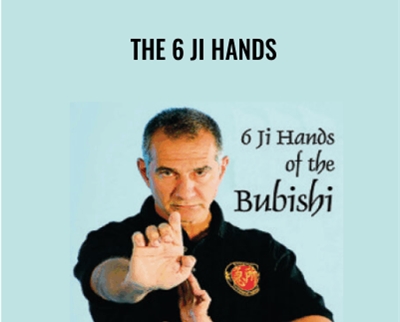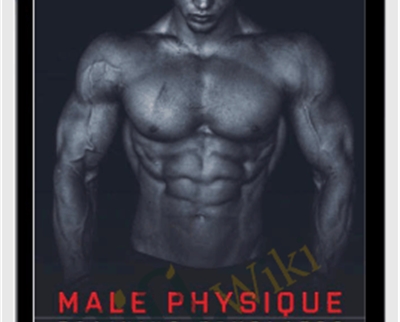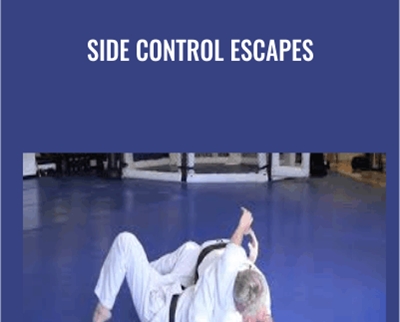The 6 Ji Hands – Kyusho
Original price was: $24.00.$13.00Current price is: $13.00.
The 6 Ji Hands – Kyusho Download. The Arts have gotten more complex and acrobatic or athletically involved. Whats more is with the advent of the MMA (Mixe…
Salepage link: At HERE. Archive:
Much has been written, filmed and taught publicly in Kyusho recently, mostly on the anatomical targets and the affects. But nothing has been written on the weapons of ancient times to best attack them or the way in which they are actually used. We must first remember that Modern Martial Arts is a shadow of the ancient arts through weakening lines of instruction (Lineage), the passing of “Secret” information and the advent of Sport. The Arts have gotten more complex and acrobatic or athletically involved. What’s more is with the advent of the MMA (Mixed Martial Arts), there is far more technique to study and practice.
Once upon a time the styles were based on fewer techniques, but involved more specialized training to aid those few techniques. It was not uncommon to have a style composed of 13, 36, 54 techniques, as a matter of fact old Katas or forms were named by how many techniques they contained. These were names like Seisan (13), Sanseiryu (36), Gojushiho (54) and many others, were used as the styles source techniques or methods. However what they lacked in numbers they made up for training and conditioning for them.
These old styles would form these particular hand weapons (which can still be seen only in these Katas), but they would spend as much if not more time conditioning them to strengthen, harden or make impervious to damage. They forged them over time into solid actual weapons by what we would think as extreme and possibly foolish methods. As an example the fingers would be conditioned first by grasping heavy pottery. Then slowly increasing the weight by adding water, this developed incredible gripping strength, but more importantly began the hand strengthening for more advanced training. The next phase would be to fill a container with sand and repeatedly plunge the fingers and hands in (or in Iron Palm methods, to slap the sand). This continued over time as they then heated the sand, and then switched sand for fine rocks and later into larger stone. They incessantly struck their fingers into training devices for years at a time to yield a tempered weapon that could penetrate the fascia, or otherwise destroy the body parts of their opponents.
In modern times we do not work like this, nor do we need to, as time, health and legal issue will not allow. But by using modern Kyusho (nerve attacks), over blood, bone and tissue attacks we can still effectively use these weapons with the same actions to instantly incapacitate the opponent without observable or physical damage. In fact these old hand positions and methods are just as viable today as they were when developed, even used in a slightly different way.
Bubishi
Historian Patrick McCarthy wrote in his groundbreaking book “Bubishi the Bible of Karate” the ideograms break down literally as Bu (Military), Bi (preparation) and Shi (record), or what can be called a record of military preparation. It is the real information behind the myths and legends passed done and seemingly embellished on, yet we find it is not only relevant but a key element in ancient fighting methods.
This once secret and revered and held by only privileged Masters of Karate, was a text that was passed down to only the most worthy of students or a styles inheritor. This text, which was presumed to arrive on the shores of Okinawa from Fuzhou China in the mid to late 19th century, was the bedrock of Okinawan fighting methods and has no known author. It is a great book of History, Philosophy and Strategy on par with the great “Book of Five Rings” by Miamoto Musashi, or the “Art of War” by Sun Tzu whereas it serves as a continuous source of inspiration as well as documentation of real Karate. But unique to this ancient text is also exacting methods of fighting as well as anatomical locations, times of day to attack them, Actual techniques taken from two major Kata as well as Chinese Medicine and Herbal Pharmacology.
Also unique in this text are a set of 6 hand positions (6 Ji Hands or 6 Energy Hands), that are specified to inflict massive physical damage on the opponent, with the specific art of Dim Mak or Death Touch also referred. These hand weapons were ideal for attacking the Blood systems of the body causing not only immediate incapacitation, but over time internal bleeding lead to delayed fatal consequence. These targets included in this text are also referred to as “Blood Gates” or areas that access to important blood vessels and or blood filled organs are possible. The text includes the most vulnerable times of the day to attack them to cause destruction of the vessels or organs to kill the opponent.
However as intriguing as these unique hand positions and their affects are, they are not a plausible or even practicable method in modern times. The legal and ethical ramifications for killing, maiming or permanently disabling even an attacker, make their use or study impractical. They can still be seen mostly in more obscure styles or arts hidden in the traditional Katas or Forms. Today though, they are widely misunderstood and taught with incorrect information or application as the true intent was not passed down freely, especially to occidentals during occupation of the indigenous societies that held these true ways.
There is hope though, as these Ji Hands can be and are perfect delivery systems for the more modern adaption of Kyusho (Vital Point) applications. The reason they are so adaptable and suited for the less damaging art of Kyusho over more conventional hand positions or weapons is in the “Ji” or energy transference. Now this is not referring to what is called Chi or Ki, or any metaphysical description of a force, but rather it is the kinetic transfer of energy into the body’s nervous system. The exact actions and deployment attributes of these ancient weapons are exactly how the nerves must also be attacked for Kyusho to actually work and transfer the neurological message properly. In fact the same targets depicted in the Bubishi are the same targets for Kyusho, just more superficially, which is the reason that the hand training and conditioning of ancient times are now not necessary. We do not need to physically penetrate into the body as far, nor do we need to damage it to gain great affect.
These targets are also access points into the nervous system as vascular tissue is always accompanied or protected by nerves and sensory organs. By attacking these structures, more immediate incapacitation is possible as it was with the ancient Dim Mak method, but with no ill or damaging effects per say. These secrets have revealed themselves over decades of research and hands on training utilizing Kyusho to incapacitate and the refinement of the attacking methods. It has brought us full circle to again embrace the ancient ways so that it is not lost to time or by the rule of man.
Energy
To better understand the “Energy” in the 6 Ji (Energy) Hands, we must first understand that the energetic transfer mentioned so often in the art of Kyusho (as seen in seminars, classes, video and text). We must look to the actual deployment and action that affects the attacked surface in a particular way by adding penetration and torque into the ballistic or manipulative action being performed.
To clarify this a bit, we have 3 main actions (there are others), which are predominantly used in Kyusho:
- Pressure on the nerve, it is not a slow or steady pressure, it is a quick pulsing action that transmits a rapid and acute electro-chemical reaction in the nerve manipulated.
- Rubbing action (actually stretching or stressing of a particular anatomical sensory receptor) is a rapid and deeply cutting action to activate a reflex action.
- Striking action, which is a deeper stretching, compressing or vibrational kinetic force to shock the nerve.
These types of energetic transfer are accomplished with proper physical and coordinated body actions using these specific hand positions. The correct action and application of torque or manipulative actions for these hand positions (along with some specific targets), can take years of study and practice to fully understand, but can actually be trained quickly to gain successful use and with no physical conditioning that can cause physical damage to the hands such as arthritis or joint damage.
There are 6 variations of torque involved in the hands actions and why the name of energy hands is so fitting. Investigating them in greater detail will enable the reader to better understand the specific hands as well as their individual possibilities.
1. Iron Bone Hand – twisting transference.
This hand position utilizes the first knuckle of the thumb for the attacking surface. The proper way to use this is in a double twisting action where the wrist simultaneously performs two twisting actions. On impact with the target, the wrist will simultaneously twist outward and downward so that the fingers travel (loosely), upward and away from the target. This focuses the energy down and into the target more readily and sends an acute shock wave into the nerve structure.
Some viable targets are; Under Eye Brow, ST-5 up, St-5 down, TW-17, ST-9, SI-18, M-HN-14, M-HN-18, LV-13, LV-14, H-2, ST-17, GB-26, BL-23, GB-20, SP-11, ST-34 and many others.
2. Iron Sand Palm – Extending (Exploding) Transference
Using the palm of the hand (not the fingers), this is an ideal weapon for harder surfaces where the nerve is superficial such as in the GB-Cluster of the forehead. The GB-Cluster is actually two braches of the Supraorbital nerve that surfaces from behind the bone of the eye to transverse up from the corner of the eye as well as the middle of the eyebrow, up the forehead and into the hair line, just under the skin and other tissue. The method to use this weapon is to quickly extend the palm itself (as the fingers withdraw), on impact. This will cause a shock wave into the struck mass that is expansive in nature… think of the ripples in the water when an object enters it. This is also well suited for other targets that are found just under the skin on the harder foundation of the skull. These other viable targets are (but not limited to), ST-5, BL-10, ST-1, ST-3, M-HN-18, as there are many others.
3. Sword Hand (Wind Hand) – Snapping Transference
Used extensively in the Top Ten DVD and book, this weapon generates a lot of penetrating force due to the increase velocity of the weapon. Using the area called the heal of the palm or wrist bone, as the hand or arm travels to the target with a set velocity, it is then increased by jerking the wrist bone into the target causing a sharper surface area as well as sharper focal point of energy transfer. Some specific targets that react well with this attack are in softer tissue such as the neck for GB-20, LI-18 & ST-9, or even on harder surfaces like the back of the jaw at TW-15.
4. One blade of Grass Hand – Double directional transference
The double direction can be thought of in classical as Yin and Yang, or a simultaneous Push and Pull deployment. As an example the bent fingers can act as a pulling or stretching action as the extended finger jabs into the stretched nerve. For example, by grabbing the collar bone to activate the ST-10 or 11, this in affect stretches the nerve in between the strands of the sternocleidodmastoid muscle at ST-10 or ST-9 for a sharp penetrating jab from the extended index finger. This is accomplished with a torque of the wrist to gain focused and penetrating force with small efficient action.
5. Blood Pool Hand – forward rotational transference
This is for more powerful and percussive attack for many targets. It is better suited than the other hands for deeper penetration into the body targets or cavity using the forward rotational motion of the first two knuckles. However we cannot (as in all of the hand positions) negate the possibilities for poking, pulling or compressing type actions of the fingertips, or folding action of the palm.
Some targets such as K-27 just under the collarbone warrant, a deeper rolling (to stretch and compress), action. Interestingly as the name depicts “Blood Pool Hand” it was a tool used in the attack of organs where the blood actually pools. This could adversely affect or damage the Spleen, Liver, Kidney or even the Heart. Or as in the first target K-27 crucial vascular tissue to and from the Heart such as the Aortic or Jugular Arches.
6. Iron Claw Hand – Pulling Transference
This weapon is not new to most in the arts as it is one of the more common weapons. However it is not typically employed as was intended, nor is it typically taught to target Kyusho or Dim Mak in these modern times. However this is a very versatile weapon that originally targeted these weaker anatomical structures, such as on the Wrist, Forearm, Upper arm, Neck, Face even Minimally on the leg.
The correct application is to push surrounding structures away to expose the true target as it then compresses and twists to set (the Claws) into the structure. This single weapon is so vast in scope that we will devote another article and video presentation to illustrate them in more detail.
Conditioning
Conditioning occurs naturally with practice of the weapon in hands on training and with real Kyusho contact to realize real affects. As example as you use the Iron Claw by grabbing wrists and other areas, when you use contact and force to solicit a neurological response, you are simultaneously training speed, timing, strength, proper grip and actions of torque along with developing the sensitivity and targeting. No longer do we need to mangle our hands as they did in ancient times as we now have refined beyond the destructive force of Dim Mak into the more subtle and yet effective art of Kyusho.
This information was the precursor to many newer compilations of such lethal or vital targets and their methods of attack. Several recent (100 years), published compilations or secret notes have been passed down from people like Funakoshi, Fujita and more recently Hohan Soken (all now deceased) and all pass along targets and processes for the use of the Bubishi’s writtings. These depict incapacitating or Fatal targets that Kyusho/Dim Mak originally was comprised of and has been in existence for centuries, perhaps even Millennia. Historical writings, accounts and documents are numerous in this respect, but not taken as seriously in the past. But it is due to the resurgence of Kyusho beginning back in the later 1980’s as well as its westernization, has changed this neglect. As we continue to research, we continuously return to these ancient writings and documents to understand and clarify what was recorded.
Not all are nerve attacks (as we currently work with due to legal and ethical reason), but also include blood vessels, organs and physical structures. These targets are what is mapped out in the motions of Kata (Kuens and Forms) with correct methods and angles to gain the desired affect. But what is the reason or explanation for those marked as Fatal? We will look at two examples below with the original location, description and ramifications, then give further evidence for why these can have the specified affects. We need to remember that the ancient arts did not have as many techniques as modern martial arts. What they did spend time on is conditioning body weapons with grueling methods that deformed and hardened the weapons over time.
In modern times we are not as inclined to this type of physical disfigurement, but there are hand postures and correct training to help us still realize the worth and applicability of these weapons. Certain conditioning is still available to forge these formidable weapons without disfigurement, yet with intense disabling capabilities.
We will not in this edition reveal or work with the more damaging and possibly deadly ramifications of using these weapons to attack the blood gates, but rather use them against the more sensitive, instant and disabling neurological targets instead.
* This text was brought into the public eye by the well known Martial Artist Patrick McCarthy and has since been copied by others in several editions.
© Evan Pantazi 2011
Here's an overview of the prominent keywords and a list of famous authors:
Business and Sales: Explore business strategies, sales skills, entrepreneurship, and brand-building from authors like Joe Wicks, Jillian Michaels, and Tony Horton.
Sports and Fitness: Enhance athleticism, improve health and fitness with guidance from experts like Shaun T, Kayla Itsines, and Yoga with Adriene.
Personal Development: Develop communication skills, time management, creative thinking, and enhance self-awareness from authors like Gretchen Rubin, Simon Sinek, and Marie Kondo.
Technology and Coding: Learn about artificial intelligence, data analytics, programming, and blockchain technology from thought leaders like Neil deGrasse Tyson, Amy Cuddy, and Malcolm Gladwell.
Lifestyle and Wellness: Discover courses on holistic health, yoga, and healthy living from authors like Elizabeth Gilbert, Bill Nye, and Tracy Anderson.
Art and Creativity: Explore the world of art, creativity, and painting with guidance from renowned artists like Bob Ross and others.
All the courses on WSOlib are led by top authors and experts in their respective fields. Rest assured that the knowledge and skills you acquire are reliable and highly applicable.
User Reviews
Only logged in customers who have purchased this product may leave a review.

Original price was: $24.00.$13.00Current price is: $13.00.












There are no reviews yet.